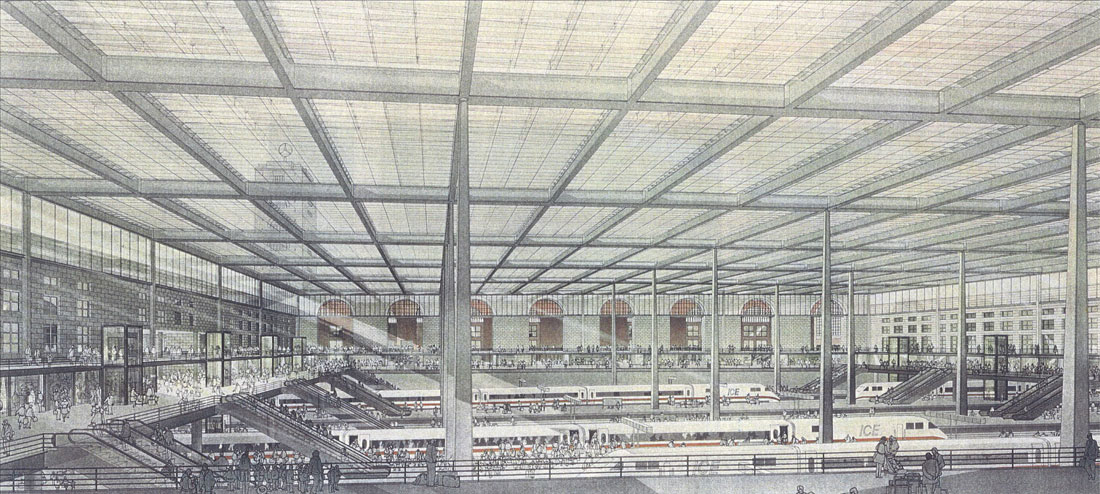

The rail station competition was put out by the Deutsche Bahn AG in February 1997. Both the state of Baden-Württemberg and the state capital of Stuttgart were involved in framing the competition. They wanted solutions for the structural and creative conception of a new central station, whose eight tracks would run transversely to the current tracks of the terminal station. The existing station building designed by Paul Bonatz, which is a landmarked building, should be considered in the new design. The future main station, according to the brief, should be a “visible symbol of pioneering mobility and a landmark for Stuttgart and its region”.
The functional networking of the site is fundamentally challenged by the competition’s urban planning requirements. Therefore, the new station Stuttgart 21 offers a system which opens to all sides. It is open in the sense of accessibility from all directions. However, such a decentralized, open building only works if the building’s use is not oriented unilaterally to Arnulf Klett square, but also in the three other directions as well. Urban integration does not means blurring boundaries, but instead forming autonomous objects in an ensemble. Thus, it only succeeds if the new station forms a complete unit: as a stereometric body and as an architectural image.
Architect : Prof. Josef P. Kleihues
Client : Deutsche Bahn AG, represented by DB ProjektBau
Location : Arnulf-Klett-Platz 2,70173 Stuttgart
Type of use : Bahnhof
Competition : 1997